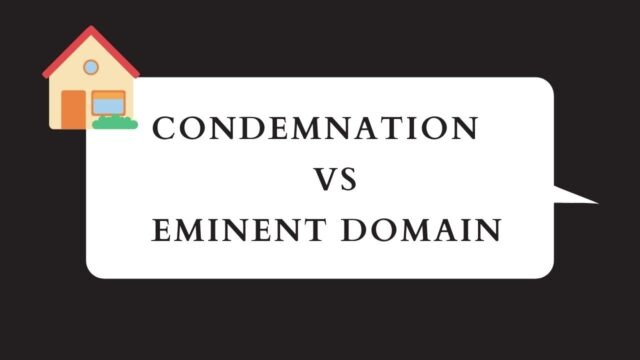
When a government entity or private organization decides to acquire private property for public use, two terms that often come up are condemnation and eminent domain. These terms represent two distinct concepts that property owners need to understand before they are approached by any entity seeking to acquire their land. In this blog post, we will take a closer look at condemnation vs eminent domain, helping property owners know what to expect in both cases.
Condemnation:
Condemnation occurs when a government entity or private organization seeks to acquire private property for public use through a forced sale. In this case, the property owner is given notice of the intent to acquire the land, and a hearing is conducted to determine its value. The owner has a right to dispute the value and seek compensation for their loss. However, if the parties cannot agree on terms, the government entity or private organization can proceed with acquiring the property through a court process.
Eminent Domain:
Eminent domain is a constitutional right of the government to acquire private property for public use as established by the Fifth Amendment of the U.S. Constitution. In other words, eminent domain is the power of the government to take property ownership from a private party without the owner’s consent. In this case, the government must pay the owner for the property, but the owner has no right to dispute the acquisition. Eminent domain is often used to acquire land for public projects such as highways, public buildings, and public utilities.
Differences between Condemnation and Eminent Domain:
One significant difference between these two legal concepts is the right of the property owner to dispute the terms of acquisition. In condemnation, the owner has the right to dispute the value of their land if they are not satisfied with the initial offer. However, in eminent domain cases, the government or private organization’s offer is final.
Another critical difference is that eminent domain may be used by the government to acquire land even if a public use has not been identified. For instance, if the government believes that a certain area needs revitalization, it may use its power of eminent domain to acquire property from private owners in the area.
The Importance of Knowing Your Property Rights:
Knowing your property rights is critical when it comes to acquiring land by government entities and private organizations. It would be wise to consult with a real estate attorney to understand the process and determine if the acquisition is legal, necessary, or justified.
In some cases, the government entity offering compensation may be lowballing the value of the property, which means that the owner may be entitled to more compensation than what is initially offered. Therefore, it is essential to have proper legal representation to ensure that property owners receive fair compensation for their loss.
Conclusion:
In conclusion, the acquisition of private property for public use can occur through condemnation or eminent domain. While these two legal concepts may appear similar, there are critical differences that property owners need to know. Understanding the legal implications of each process is imperative to determine the right course of action for property owners who may be facing the risk of losing their land. Finally, knowing your property rights and enlisting the help of an experienced attorney can help ensure that you receive fair compensation for your loss.


































